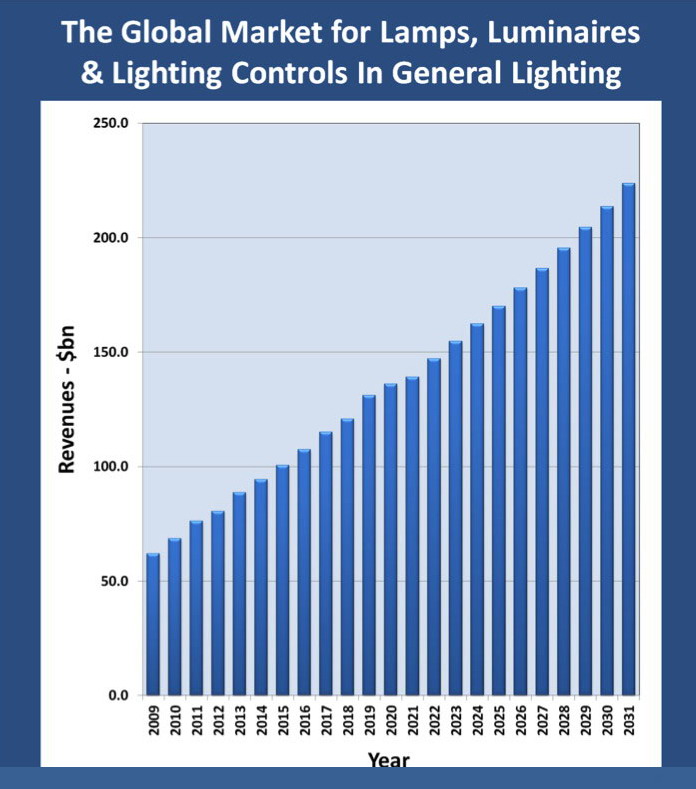The global lighting market is benefiting from a "Perfect Storm" of solid-state technology development, high energy prices, economic turmoil and social factors coinciding according to analysis firm Datapoint Research.
The market for luminaires, lamps and lighting controls is forecast to reach $108bn in 2016 as consumers and industry increasingly pay more up-front for efficient, controllable lighting solutions. Semiconductor revenue for light engines and drive electronics is set to top $10bn in 2016 as a large proportion of the conventional low-cost lamp market is eroded by high-value LED luminaires.
Now is a key turning point in the history of the lighting industry. A period of rapid technology change creating both competitive challenges for established suppliers and new opportunities for vigorous growth. At a period in time where many industry sectors face uncertainty as the world recovers from the financial crisis and subsequent episodes of economic turmoil, the lighting industry shines out as a beacon of opportunity, welcoming in a new age in the way we all think about energy use.
The global recession has been very severe in North America and Europe and clearly had an immediate negative effect on some lighting applications owing to a slowdown in new builds and commercial retrofits. However, the depth of the economic woes has had a sharp impact on adjusting the way corporations, government agencies and individuals think about and budget for energy, creating a situation where "everyone" is prepared to pay a little more up-front for technology that delivers long-term savings. This is clearly very good news for the lighting industry and a long-term trend which will continue to unfold over the next decade.
For other economies in South America, Eastern Europe, Russia, Southern Africa, China and India, the story has been more positive. Despite concerns over exports which are critical to these economies, they have maintained resilient underlying growth in infrastructure construction and social improvement. Essentially this has had a smoothing effect, protecting the global lighting industry from the worst of the recession.

The first energy efficient "Lighting Revolution" began in the 1970s, and took around 40 years for CFLs to emerge as the consumer's energy saving lamp of "choice" as 2010 marked the year that global shipments of electronically controlled lamps exceeded Edison's original incandescent design for the first time.
The second lighting revolution is now well underway in the form of solid-state lighting. However, this time the rate of technology change is much accelerated and the revenue stakes are much higher with the potential to double the value of the entire market in under 10 years - quite astounding for such a mature and already large market. Datapoint Research (and many leading lighting manufacturers) anticipate solid-state lighting to become the dominant lighting technology in terms of revenue within a 10 year window – roughly 4x faster than the "First Lighting Revolution."
Lighting manufacturers are desperate to move away from "cash-cow" components businesses, to offering value adding system-level solutions. Advanced luminaires featuring "in-vogue" LED light engines and novel lighting controls offers this opportunity. National Governments and lighting manufacturers are transforming the Solid- State Lighting market from a poorly regulated industry filled with bespoke products of widely varying performance into a well regulated industry with tightly controlled checks and measures. The work of the DoE and Energy Star in the US and the international work of lighting manufacturers' organisations including ELC/CELMA and Zhaga in Europe are making great strides forwards in electrotechnical standardisation. This supports adoption of LED light engines by luminaire systems integrators (who were previously concerned over being technology-stranded by the rate of change of the LED industry) and builds confidence with end-buyers who need reassurance to spend more up-front on LED solutions, but who have previously seen the market "spoiled" by shoddy first generation products.





